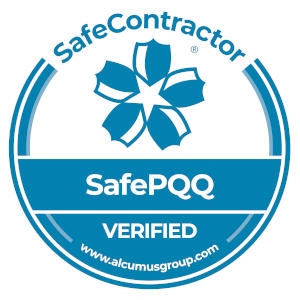Why Video is Non-Negotiable in Modern Warehouses
Warehouse managers operate with significant visibility gaps. Material handling equipment moves constantly, pedestrians and machinery interact unpredictably, and critical events unfold in moments that escape notice. Without visual data, operational decisions are made on incomplete information – hindering safety, efficiency, and performance optimization.
Video is the foundation of modern warehouse intelligence. When you can see what’s actually happening in real time across your facility, you unlock the ability to optimize operations, coach performance, prevent incidents before they occur, and make decisions based on facts rather than assumptions.
Powerfleet’s video-first technology solutions – anchored by Pedestrian Proximity Detection and continuous recording capabilities – deliver the visual intelligence that transforms warehouses from reactive to predictive operations.
How does Powerfleet’s Pedestrian Proximity Detection function?
Powerfleet’s AI-powered vision system acts as your warehouse’s visual intelligence layer, providing real-time insights into equipment movement, pedestrian activity, and operational dynamics.
Let’s delve into the key features that make this system indispensable:
AI-powered object detection
The system’s cameras are equipped with embedded artificial intelligence that can identify specific objects, including people and industrial vehicles, without requiring any special tags, wearables, or equipment. This provides the foundational data for real-time situational awareness and intelligent operational insights.
Comprehensive coverage
With the option to install up to three vehicle-powered cameras, each providing a 120° field of view, the system provides extensive visual coverage of the warehouse environment, eliminating operational blind spots and delivering 360-degree visibility of equipment and pedestrian movement.
Intelligent alerting system
The Pedestrian Proximity Detection system features front and rear indicator lights that emit both audible and visual warnings when objects breach the vehicle’s path. This dual-sensory alert system ensures that both drivers and pedestrians have real-time awareness of potential conflicts, allowing them to respond immediately.
Customizable safety zones
The dual-area option allows the creation of advanced warning and critical action zones based on proximity to the vehicle. This intelligent zoning approach minimizes alert fatigue while maintaining precision awareness in critical zones, ensuring operators stay focused on genuine operational threats.
The benefits of our on-site video solution, DVR
Powerfleet’s Digital Video Recorder captures the complete operational story of your material handling equipment. This robust system – featuring a central DVR and up to four compatible cameras – continuously records vehicle activity, creating an invaluable archive of operational data that powers performance improvement across multiple dimensions.
1. Incident analysis and prevention
Video records transform post-incident response from guesswork to precision analysis. When events occur, you have an irrefutable visual record that reveals exactly what happened, why it happened, and what contributed to the outcome.
Armed with these insights, management can develop targeted strategies to prevent similar occurrences in the future, significantly enhancing overall safety protocols. Moreover, the footage serves as a powerful tool for creating more effective and relevant safety training programs, grounding coaching in real events rather than hypothetical scenarios.
2. Operational efficiency improvements
Video analytics reveal the hidden dynamics of your warehouse. You can see how equipment moves through your facility, identify bottlenecks, map traffic patterns, and spot optimization opportunities that would otherwise go unnoticed.
This visibility supports strategic decisions – layout changes, process redesigns, traffic flow improvements – all based on real operational behavior instead of assumptions.
The ability to visually map and understand the intricacies of daily operations enables continuous refinement and improvement of warehouse logistics, ultimately boosting overall efficiency and output.
3. Enhanced training and skill development
Video footage is a powerful tool for employee training, offering numerous advantages at all levels of experience.
New hires learn faster when they see real-world operations in action – not just theoretical best practices. Experienced operators get concrete visual feedback on their performance, enabling targeted skill refinement. Both groups benefit from a shared visual language around operational excellence.
Additionally, the ability to easily share best practices across the organization through video ensures consistent, high-quality training and promotes a culture of continuous improvement.
4. Risk management and compliance
Video creates an objective record that protects your operation. In disputes, insurance claims, or compliance audits, visual evidence eliminates ambiguity and accelerates resolution.
The system also helps ensure compliance with safety regulations and standards by providing clear documentation of adherence to protocols. Furthermore, in insurance claims, the detailed visual documentation provided by the video system can significantly support the claims process, potentially leading to faster resolutions and more favorable outcomes.
5. Performance monitoring and improvement
Our video system, in combination with Unity integrations, enables comprehensive, ongoing performance evaluation, benefiting both individual employees and the warehouse.
Managers can precisely identify performance patterns, including highlights and areas for improvement. Coaching shifts from being subjective to fact-based, allowing employees to clearly see what strong performance looks like in your specific warehouse environment. Throughout the facility, you build a culture where performance growth is data-driven, ongoing, and rooted in observable facts.
Integration: The key to maximizing video solution benefits
Video data has no value in isolation. The real power emerges when visual intelligence is integrated into a unified operational platform. Powerfleet’s comprehensive SaaS platform, Unity, transforms raw video footage into actionable operational intelligence.
Data enrichment and analysis
The Unity platform ingests, processes, and enriches data from virtually every asset, vehicle, and person in the warehouse, providing a holistic view of operations. Video becomes part of a complete operational picture – combined with telematics, equipment data, and workflow metrics to reveal insights that any single data source cannot provide alone.
Automated operational intelligence
Unity’s integration capabilities turn video insights into actionable steps. Real-time data prompts quick responses – like adjusting speeds in busy areas, managing access based on equipment status, and alerting supervisors when operational issues happen – all aimed at keeping your facility operating smoothly and efficiently.
Pattern recognition and predictive insights
By analyzing patterns across video and operational data, the platform identifies trends before they become problems. You can anticipate bottlenecks, predict maintenance needs, and optimize workflows – moving from reactive management to strategic foresight.
The video-first approach: Powerfleet’s commitment to warehouse excellence
As a video-first company, Powerfleet understands that visual data is not just an extra – it’s the foundation of modern warehouse management. This approach offers several distinct benefits:
Comprehensive visibility: Powerfleet’s video solutions provide a complete, real-time view of warehouse operations, from employee activity to equipment performance and more. This holistic visibility empowers data-driven decision-making and optimization.
Proactive safety: By monitoring critical areas and detecting potential hazards, Powerfleet’s video-centric systems can trigger automated safety controls and alert supervisors, preventing accidents before they occur.
Operational efficiency: Video analytics enable the identification of workflow bottlenecks, underutilized assets, and opportunities for process improvements. This insight drives optimizations that boost productivity and throughput.
Seamless integration: Powerfleet’s Unity platform seamlessly integrates video data with other warehouse management systems, creating a centralized hub for all operational intelligence. This streamlined approach maximizes the value of visual data.
Powerfleet’s unwavering commitment to a video-first strategy underscores its dedication to optimizing warehouse operations through innovative, data-driven solutions. By placing visual data at the core of its offerings, the company empowers customers to enhance visibility, drive precision decision-making, and achieve operational excellence.
Learn more about Powerfleet’s on-site solutions.

